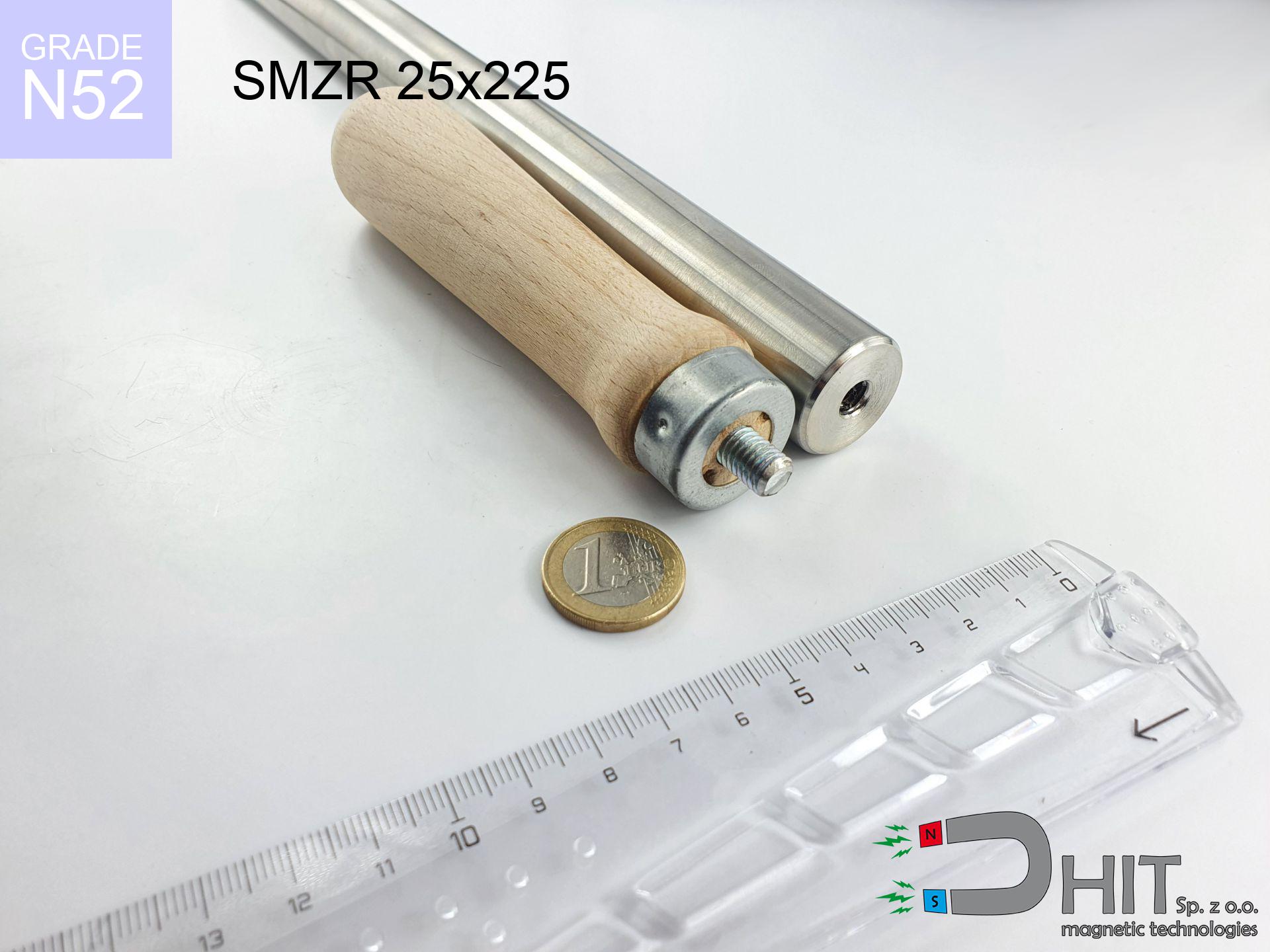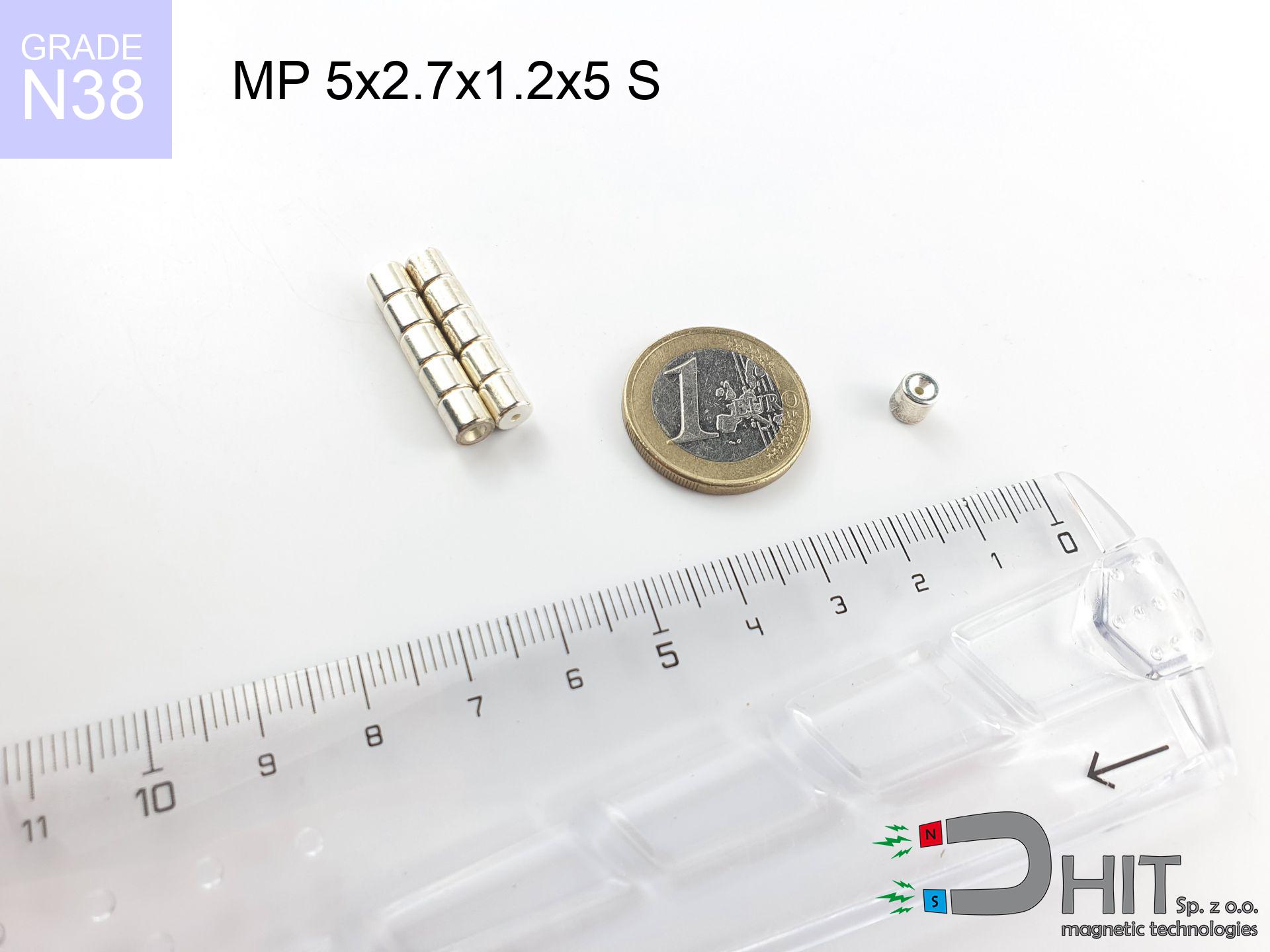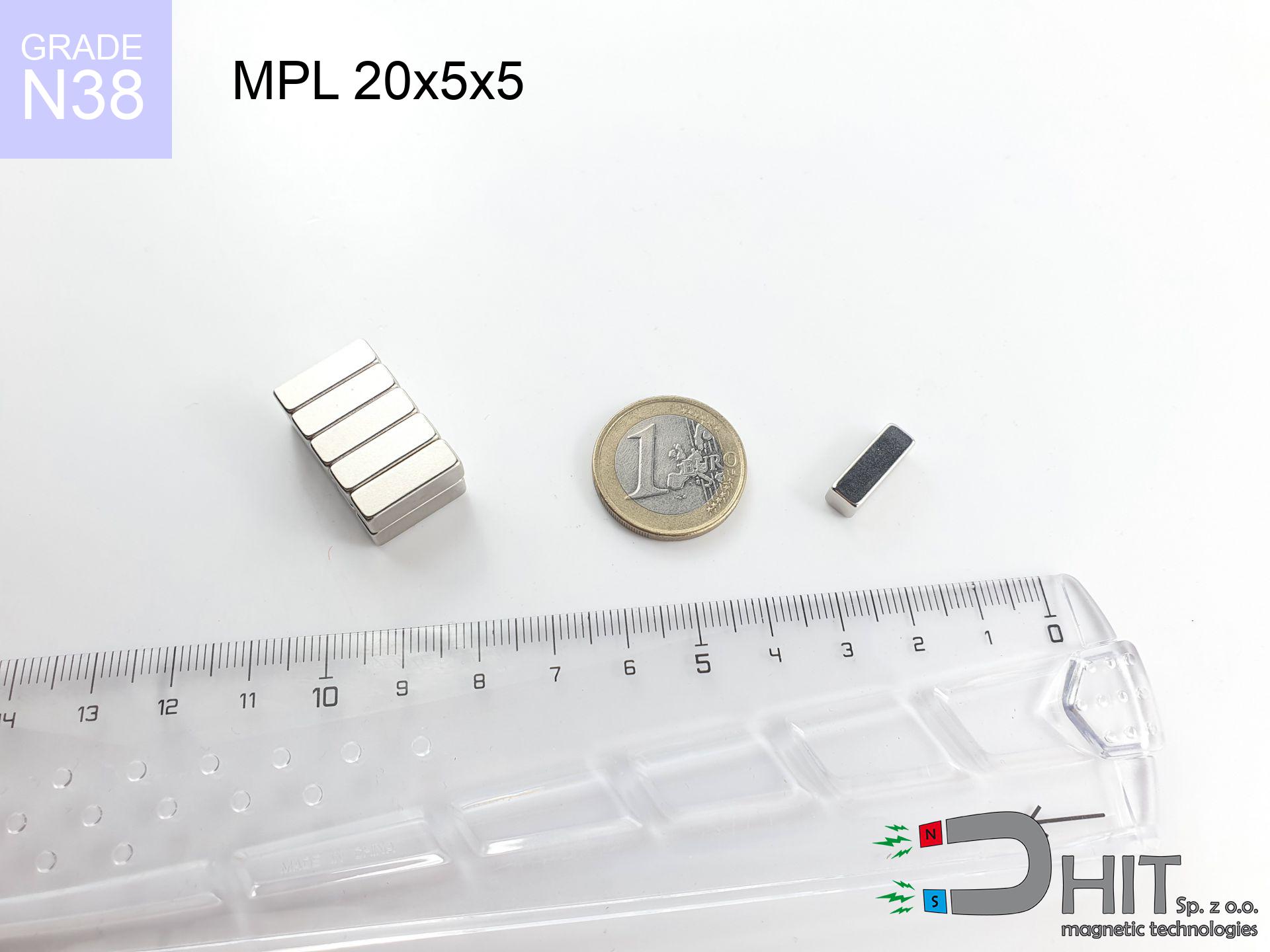SM 32x325 [2xM8] / N52 - magnetic separator
magnetic separator
Catalog no 130460
GTIN/EAN: 5906301813316
Diameter Ø
32 mm [±1 mm]
Height
325 mm [±1 mm]
Weight
1800 g
Magnetic Flux
~ 10 000 Gauss [±5%]
1045.50 ZŁ with VAT / pcs + price for transport
850.00 ZŁ net + 23% VAT / pcs
bulk discounts:
Need more?
Call us
+48 22 499 98 98
or send us a note through
inquiry form
the contact page.
Specifications and structure of a neodymium magnet can be checked using our
power calculator.
Orders placed before 14:00 will be shipped the same business day.
Detailed specification - SM 32x325 [2xM8] / N52 - magnetic separator
Specification / characteristics - SM 32x325 [2xM8] / N52 - magnetic separator
| properties | values |
|---|---|
| Cat. no. | 130460 |
| GTIN/EAN | 5906301813316 |
| Production/Distribution | Dhit sp. z o.o. |
| Country of origin | Poland / China / Germany |
| Customs code | 85059029 |
| Diameter Ø | 32 mm [±1 mm] |
| Height | 325 mm [±1 mm] |
| Weight | 1800 g |
| Material Type | Stainless steel AISI 304 / A2 |
| Magnetic Flux | ~ 10 000 Gauss [±5%] |
| Size/Mount Quantity | 2xM8 |
| Polarity | circumferential - 12 poles |
| Casing Tube Thickness | 1 mm |
| Manufacturing Tolerance | ±1 mm |
Magnetic properties of material N52
| properties | values | units |
|---|---|---|
| remenance Br [min. - max.] ? | 14.2-14.7 | kGs |
| remenance Br [min. - max.] ? | 1420-1470 | mT |
| coercivity bHc ? | 10.8-12.5 | kOe |
| coercivity bHc ? | 860-995 | kA/m |
| actual internal force iHc | ≥ 12 | kOe |
| actual internal force iHc | ≥ 955 | kA/m |
| energy density [min. - max.] ? | 48-53 | BH max MGOe |
| energy density [min. - max.] ? | 380-422 | BH max KJ/m |
| max. temperature ? | ≤ 80 | °C |
Physical properties of sintered neodymium magnets Nd2Fe14B at 20°C
| properties | values | units |
|---|---|---|
| Vickers hardness | ≥550 | Hv |
| Density | ≥7.4 | g/cm3 |
| Curie Temperature TC | 312 - 380 | °C |
| Curie Temperature TF | 593 - 716 | °F |
| Specific resistance | 150 | μΩ⋅cm |
| Bending strength | 250 | MPa |
| Compressive strength | 1000~1100 | MPa |
| Thermal expansion parallel (∥) to orientation (M) | (3-4) x 10-6 | °C-1 |
| Thermal expansion perpendicular (⊥) to orientation (M) | -(1-3) x 10-6 | °C-1 |
| Young's modulus | 1.7 x 104 | kg/mm² |
Table 1: Rod construction
SM 32x325 [2xM8] / N52
| Parameter | Value | Description / Unit |
|---|---|---|
| Diameter (Ø) | 32 | mm |
| Total length | 325 | mm (L) |
| Active length | 289 | mm |
| Section count | 12 | modules |
| Dead zone | 36 | mm (2x 18mm starter) |
| Weight (est.) | ~1986 | g |
| Active area | 291 | cm² (Area) |
| Housing material | AISI 304 | 1.4301 (Inox) |
| Surface finish | Ra < 0.8 µm | Polished |
| Temp. class | 80°C | Standard (N) |
| Force loss (at max °C) | -12.8% | Reversible loss (physics) |
| Force (calculated) | 41 | kg (theor.) |
| Induction (surface) | ~10 000 | Gauss (Max) |
Chart 2: Field profile (12 sections)
Chart 3: Temperature performance
Elemental analysis
| iron (Fe) | 64% – 68% |
| neodymium (Nd) | 29% – 32% |
| boron (B) | 1.1% – 1.2% |
| dysprosium (Dy) | 0.5% – 2.0% |
| coating (Ni-Cu-Ni) | < 0.05% |
Environmental data
| recyclability (EoL) | 100% |
| recycled raw materials | ~10% (pre-cons) |
| carbon footprint | low / zredukowany |
| waste code (EWC) | 16 02 16 |
Other products
Advantages as well as disadvantages of neodymium magnets.
Benefits
- They have unchanged lifting capacity, and over nearly ten years their attraction force decreases symbolically – ~1% (in testing),
- They are resistant to demagnetization induced by external magnetic fields,
- The use of an refined finish of noble metals (nickel, gold, silver) causes the element to present itself better,
- Magnets are distinguished by impressive magnetic induction on the outer side,
- Thanks to resistance to high temperature, they are able to function (depending on the form) even at temperatures up to 230°C and higher...
- Thanks to freedom in forming and the capacity to modify to client solutions,
- Wide application in electronics industry – they find application in computer drives, drive modules, medical devices, as well as industrial machines.
- Thanks to efficiency per cm³, small magnets offer high operating force, in miniature format,
Disadvantages
- Susceptibility to cracking is one of their disadvantages. Upon intense impact they can break. We advise keeping them in a special holder, which not only secures them against impacts but also raises their durability
- Neodymium magnets lose their strength under the influence of heating. As soon as 80°C is exceeded, many of them start losing their force. Therefore, we recommend our special magnets marked [AH], which maintain durability even at temperatures up to 230°C
- When exposed to humidity, magnets usually rust. For applications outside, it is recommended to use protective magnets, such as magnets in rubber or plastics, which secure oxidation as well as corrosion.
- Due to limitations in realizing threads and complicated shapes in magnets, we recommend using a housing - magnetic mechanism.
- Potential hazard to health – tiny shards of magnets pose a threat, in case of ingestion, which becomes key in the aspect of protecting the youngest. Additionally, small components of these devices can be problematic in diagnostics medical when they are in the body.
- With mass production the cost of neodymium magnets is economically unviable,
Holding force characteristics
Magnetic strength at its maximum – what affects it?
- using a base made of low-carbon steel, serving as a ideal flux conductor
- with a thickness no less than 10 mm
- with an ideally smooth contact surface
- under conditions of ideal adhesion (surface-to-surface)
- for force applied at a right angle (pull-off, not shear)
- at temperature approx. 20 degrees Celsius
Key elements affecting lifting force
- Space between surfaces – every millimeter of separation (caused e.g. by varnish or dirt) diminishes the magnet efficiency, often by half at just 0.5 mm.
- Pull-off angle – remember that the magnet holds strongest perpendicularly. Under sliding down, the holding force drops significantly, often to levels of 20-30% of the nominal value.
- Element thickness – to utilize 100% power, the steel must be sufficiently thick. Thin sheet limits the attraction force (the magnet "punches through" it).
- Material type – the best choice is high-permeability steel. Stainless steels may have worse magnetic properties.
- Surface structure – the smoother and more polished the surface, the larger the contact zone and higher the lifting capacity. Unevenness creates an air distance.
- Thermal conditions – NdFeB sinters have a sensitivity to temperature. When it is hot they lose power, and in frost they can be stronger (up to a certain limit).
Lifting capacity testing was conducted on a smooth plate of optimal thickness, under perpendicular forces, whereas under shearing force the load capacity is reduced by as much as fivefold. Additionally, even a slight gap between the magnet’s surface and the plate lowers the holding force.
H&S for magnets
Eye protection
Beware of splinters. Magnets can fracture upon violent connection, ejecting sharp fragments into the air. Eye protection is mandatory.
Allergic reactions
Medical facts indicate that the nickel plating (standard magnet coating) is a strong allergen. For allergy sufferers, refrain from touching magnets with bare hands and choose encased magnets.
Choking Hazard
Product intended for adults. Small elements pose a choking risk, causing severe trauma. Keep away from kids and pets.
Do not drill into magnets
Powder produced during machining of magnets is self-igniting. Do not drill into magnets unless you are an expert.
Hand protection
Pinching hazard: The attraction force is so immense that it can result in hematomas, crushing, and even bone fractures. Protective gloves are recommended.
Medical implants
Health Alert: Strong magnets can deactivate heart devices and defibrillators. Stay away if you have medical devices.
Data carriers
Intense magnetic fields can corrupt files on payment cards, HDDs, and other magnetic media. Maintain a gap of at least 10 cm.
Safe operation
Use magnets with awareness. Their huge power can shock even professionals. Stay alert and do not underestimate their power.
Phone sensors
GPS units and smartphones are extremely susceptible to magnetic fields. Direct contact with a powerful NdFeB magnet can ruin the sensors in your phone.
Heat sensitivity
Control the heat. Exposing the magnet above 80 degrees Celsius will permanently weaken its magnetic structure and pulling force.

![Magnetic bar SM 32x325 [2xM8] / N52 Magnetic bar SM 32x325 [2xM8] / N52](https://cdn3.dhit.pl/graphics/banners/magnet.webp)
![SM 32x325 [2xM8] / N52 - magnetic separator](https://cdn3.dhit.pl/graphics/products/sm-32x325-2xm8-xec.jpg)


![UMGGW 29x8 [M4] GW / N38 - magnetic holder rubber internal thread UMGGW 29x8 [M4] GW / N38 - magnetic holder rubber internal thread](https://cdn3.dhit.pl/graphics/products/umg-29x8-m4-gw-duf.jpg)


